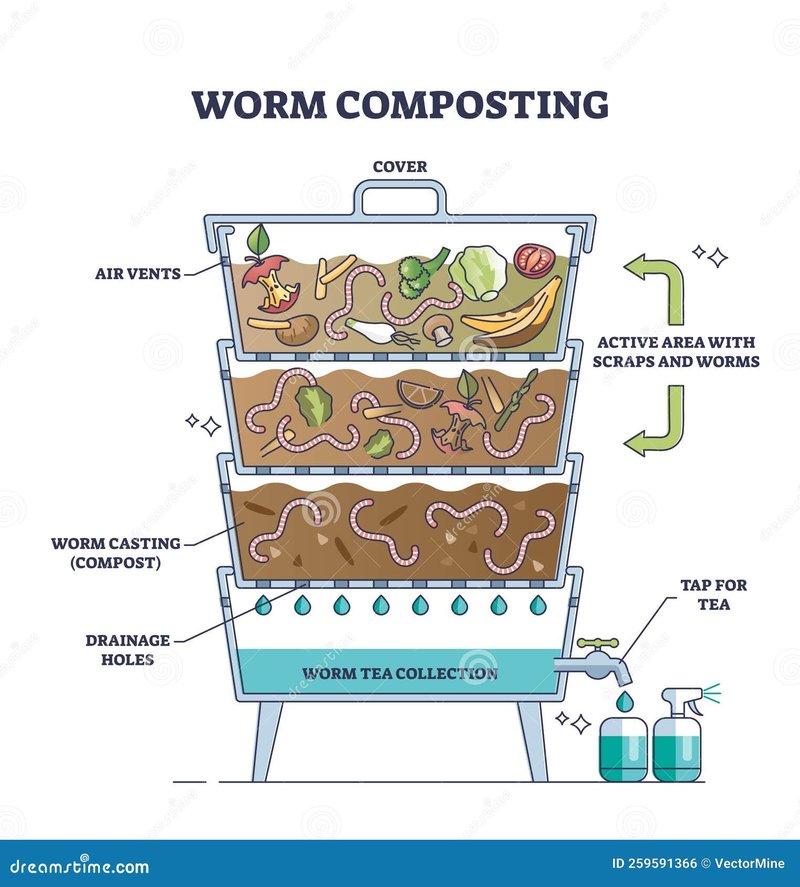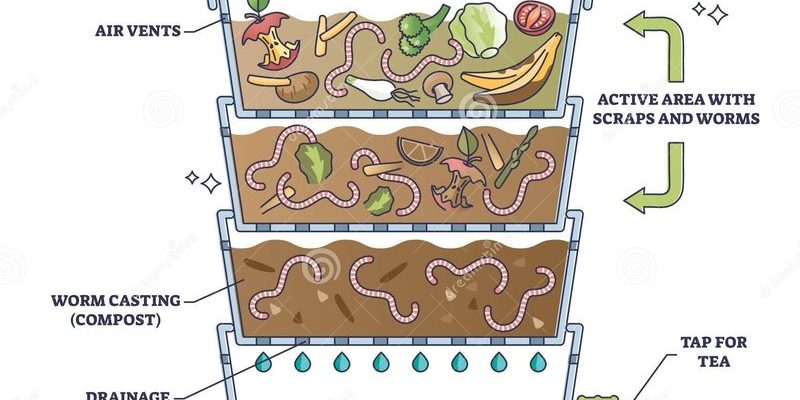
In this article, we’ll explore how these little guys contribute to the ecosystem, what other microfauna are present, and why their interactions matter for composting success. Getting into the nitty-gritty of how this intertwined life works can feel like peeling an onion, layer by layer. So grab your coffee and let’s dig in!
The Role of Worms in a Compost Ecosystem
Worms are often seen as the backbone of any compost system. They digest organic matter, turning waste into nutrient-rich castings. Picture them as nature’s recyclers, munching on kitchen scraps, yard debris, and other organic materials. As they consume this matter, they break it down into smaller particles, making it easier for other organisms to process.
But that’s just part of the story. Worm castings, which are the waste they produce, are packed with nutrients that plants absolutely love. In fact, these castings are so beneficial that they can improve soil aeration, water retention, and even boost plant growth. So, when worms do their job well, it creates a flourishing environment not just for them but for countless other microfauna too.
You might be wondering what happens when there’s a variety of creatures in the same bin. Each species brings something unique to the table. While worms are great at breaking down larger particles, other microfauna help with the finer details, creating a rich tapestry of life in your compost.
Other Microfauna in the Worm Bin
So, who are the other players in this tiny universe? Aside from worms, you’ll find a host of microfauna, including nematodes, protozoa, and various bacteria and fungi. Each of these components plays a critical role in breaking down organic matter and enriching the compost.
Nematodes, for example, are tiny roundworms that consume bacteria and fungi, helping to control their populations. They can be thought of as the police force in the compost city, ensuring that no single type of organism dominates the scene. Similarly, protozoa feed on bacteria, keeping their numbers in check while also providing a food source for other microfauna, like nematodes.
As for microbes, they’re the unsung heroes of composting. Bacteria break down the organic matter quickly, while fungi take longer to decompose tougher materials like wood and leaves. Both are essential for a balanced ecosystem, and the worms help create an environment that supports their growth.
How Worms Interact with Other Microfauna
The interactions between worms and other microfauna are fascinating. Worms help create a space where many organisms can thrive. For example, as they tunnel through the compost, they aerate the material, which makes it easier for bacteria and fungi to flourish. This is like opening windows in a stuffy room—you create a more comfortable environment for everyone.
Furthermore, when worms eat compost, they excrete waste that is rich in nutrients. This waste becomes food for various bacteria and fungi. In turn, these microbes break down the waste further, making nutrients more accessible for plants. It’s a beautiful cycle of give and take, with worms at the heart of it all.
You might also notice that worms help improve the diversity of life in the compost. The more diverse the microfauna, the more resilient your compost ecosystem becomes. Diversity helps balance the needs and resources among all organisms, ensuring that no one species can overpopulate and disrupt the harmony of the environment.
The Benefits of a Diverse Microfauna Community
You might be wondering why diversity in microfauna matters. Well, having a variety of organisms helps maintain balance. When one type of microfauna gets out of control, it can lead to problems, like unpleasant odors or slow decomposition. With a diverse community, these issues are less likely to arise.
A healthy microfauna community also means better nutrient cycling. Different organisms excel at breaking down different materials. While worms do a great job with larger particles, some bacteria specialize in decomposing proteins and sugars. The more types of organisms you have working together, the more efficiently your compost bin will function.
Let’s not forget about pest control, either. A diverse microfauna can help keep harmful pests in check. For example, nematodes can prey on certain harmful insects, reducing the chances of infestations. So, in essence, a bustling worm bin is not just a great place for worms; it’s a thriving ecosystem that supports plant health and resilience.
Common Challenges and Solutions in a Worm Bin
Like any ecosystem, a worm bin can face challenges. Perhaps you’ve noticed that it’s too wet or maybe it smells bad. These issues can arise from an imbalance in the microfauna community. For instance, if there’s too much moisture, it can lead to anaerobic conditions, which aren’t great for worms or other beneficial organisms.
To tackle excess moisture, consider adding more dry materials like shredded newspaper or cardboard. This will help soak up the moisture and create a balanced environment. If you’re encountering odors, it’s often a sign that the composting materials are breaking down too quickly without enough oxygen. Aerating the bin helps, as does ensuring a mix of brown materials (like dried leaves) with green materials (like food scraps).
Another common issue can be an overpopulation of fruit flies, which might indicate that the bin is too warm or that there’s too much food in one spot. To combat this, try burying food scraps deeper in the bedding or adding more carbon-rich materials.
Why This Matters for Your Composting Success
Understanding how the worm bin worm interacts with other microfauna isn’t just educational—it’s essential for successful composting. When you appreciate these interactions, you’re better equipped to maintain a happy, balanced compost ecosystem that produces nutrient-rich soil.
Healthy compost reduces waste and supports sustainability, creating a positive impact on the environment. Plus, having rich compost on hand leads to thriving plants, whether in your garden or in potted plants around your home.
You don’t have to be an expert to cultivate a successful worm bin. With a bit of knowledge about the roles of different organisms and how they interact, you can foster a thriving ecosystem that benefits both your plants and the planet.
Worm bin worms play a pivotal role in the ecosystem of composting. By interacting harmoniously with other microfauna, they help break down organic matter, improve nutrient cycling, and maintain balance within the bin. This diverse community of creatures not only aids in effective composting but also enriches our gardens and contributes to a healthier environment.
So, next time you tend to your worm bin, you might think of it as a small yet vital community where each participant contributes to a larger purpose. The humble worm, along with its microfauna friends, is truly an unsung hero of sustainability, working tirelessly to turn waste into nourishment for our planet. Happy composting!

